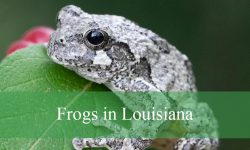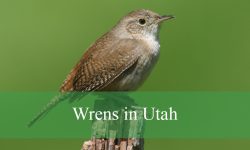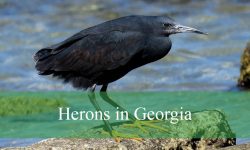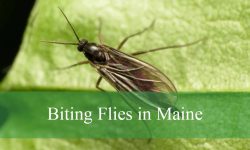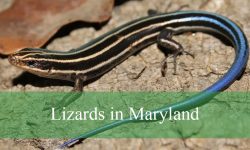New Mexico boasts a rich diversity of deer species, thriving across its deserts, mountains, and river valleys. Identifying these deer requires attention to their unique physical features, behaviors, and preferred habitats.
Among the most common are mule deer, white-tailed deer, and the smaller Coues deer, a subspecies of white-tailed deer. Each species has distinctive traits, making them fascinating subjects for wildlife observation and photography.
Exploring high mountain valleys, desert foothills, or riparian corridors provides excellent opportunities to observe these deer. This guide offers detailed identification tips, feeding habits, and the best times and locations to see New Mexico’s deer in the wild.
Different Types of Deer Found in New Mexico
Mule Deer (Odocoileus hemionus)
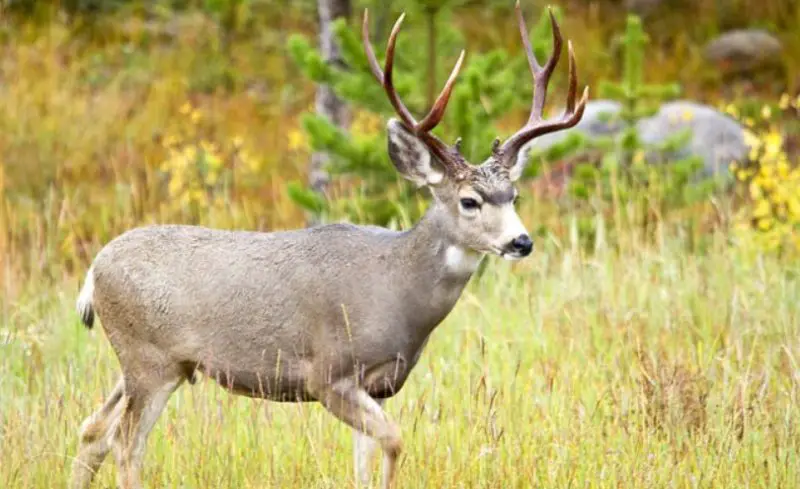
Mule deer are one of the most iconic and widely recognized deer species in New Mexico, named for their large, mule-like ears. Their coat is typically reddish-brown in summer, turning to grayish-brown in winter, which provides effective camouflage against the diverse landscapes of the state. One of the most distinguishing features of mule deer is their bifurcated, or forked, antlers, which split into two branches and continue branching out, unlike the single main beam of white-tailed deer. Bucks usually grow a new set of antlers each year, with antler size influenced by age, nutrition, and habitat quality. Mule deer fawns are born spotted and lose their spots within a few months.
Adult mule deer vary in size depending on region and nutrition, but typical bucks stand about 3 feet at the shoulder and weigh between 120 to 330 pounds, while does are smaller, weighing 95 to 200 pounds. Males are noticeably larger than females and tend to have more pronounced antler development. Their large ears not only give them their name but also enhance their hearing, which is crucial for detecting predators in open or wooded terrain. Their eyes are positioned to give a wide field of view, aiding in early predator detection.
Behaviorally, mule deer are crepuscular, most active at dawn and dusk, although they can be seen grazing throughout the day. They are known for their distinctive “stotting” or bounding leap, in which all four legs leave the ground simultaneously—a behavior used to evade predators and navigate rugged terrain efficiently. Mule deer are highly adaptable, moving seasonally between higher elevation summer ranges in the mountains and lower elevation winter ranges in the plains or valleys to access food and avoid deep snow. Socially, they form small family groups, especially does with fawns, while bucks often form bachelor groups outside the breeding season.
Feeding habits of mule deer are primarily browsers rather than grazers, meaning they feed on shrubs, forbs, and woody plants, although they occasionally consume grasses. In New Mexico, they feed on plants such as piñon pine, juniper, sagebrush, and willow, depending on habitat and season. Their diet shifts with seasonal availability, with more succulent plants eaten in spring and summer and woody browse dominating in winter. Predators of mule deer include mountain lions, coyotes, bobcats, and occasionally black bears, particularly targeting fawns during their vulnerable first months.
Mule deer occupy diverse habitats across New Mexico, including montane forests, shrublands, foothills, and high desert plains. They are especially common in areas with a mix of open meadows and forested cover. Seasonal migration is common, with mule deer traveling to lower elevations in winter to avoid snow and harsh conditions. Their distribution in New Mexico spans from the southern deserts to the northern mountains and into river valleys. Observing mule deer is most successful during early morning or late evening when they forage near edges of forests, meadows, and open desert landscapes.
White-tailed Deer (Odocoileus virginianus)
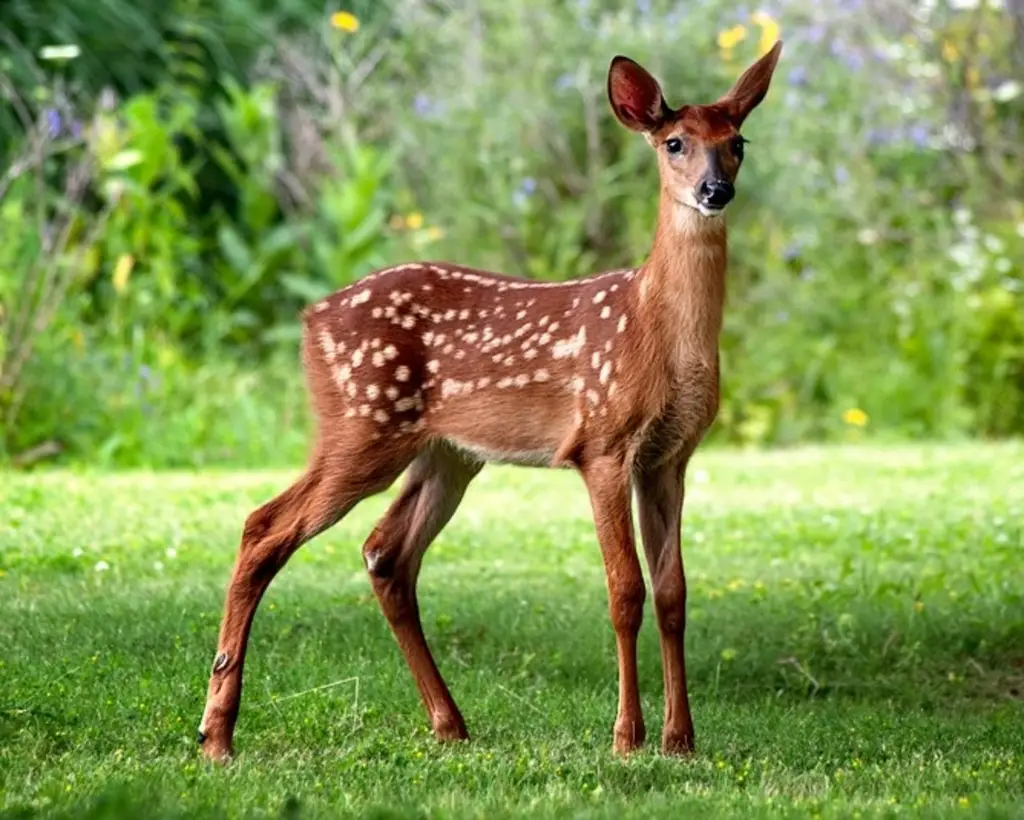
White-tailed deer are easily identified by the characteristic white underside of their tail, which they raise as a warning signal when alarmed. Their coat varies from reddish-brown in summer to grayish-brown in winter, blending seamlessly with forested, brushy, and riparian habitats of New Mexico. Bucks grow antlers with a single main beam and several tines extending from it, generally differing from the bifurcated antlers of mule deer. Fawns are born with white spots that fade as they grow, helping them remain concealed from predators. White-tailed deer have a more slender build compared to mule deer, with proportionally smaller ears and a more agile appearance.
Adult bucks typically weigh between 150 to 300 pounds and stand about 3 feet tall at the shoulder, while does are smaller, weighing 90 to 200 pounds. Their long legs allow them to navigate both open fields and dense underbrush efficiently. Their acute sense of smell and hearing helps detect danger, and their large, expressive eyes provide excellent peripheral vision. The white-tailed deer’s tail acts as a communication tool within herds, signaling threats and coordinating movements.
Behaviorally, white-tailed deer are crepuscular but can be active throughout the day, particularly in areas with minimal human disturbance. They are generally more secretive than mule deer, often using dense vegetation for cover while foraging. Bucks become solitary or form small groups outside the rut, while does form family groups with fawns. Their agility and speed—capable of running over 30 miles per hour and leaping more than 8 feet vertically—help them evade predators including mountain lions, coyotes, and bobcats.
White-tailed deer are opportunistic feeders, consuming a wide variety of vegetation including shrubs, leaves, grasses, fruits, and nuts. In New Mexico, their diet often includes chokecherry, sumac, willow, acorns, and seasonal grasses. Their foraging patterns shift with availability, with more woody browse eaten in winter. White-tailed deer also engage in bedding during the hottest or coldest parts of the day, conserving energy and minimizing exposure to predators.
In New Mexico, white-tailed deer are most commonly found in riparian areas, forest edges, woodlands, and areas with dense shrubs where cover and food are abundant. They are adaptable and occupy a wide range of elevations, from lowland river valleys to the foothills of the Sangre de Cristo and southern mountain ranges. Seasonal movements are less pronounced than mule deer, though some populations shift slightly in winter to access better forage. White-tailed deer often coexist with mule deer in transitional habitats, allowing observers to notice differences in behavior and morphology.
Coues Deer (Odocoileus virginianus couesi)

Coues deer, a subspecies of the white-tailed deer, are primarily found in southern New Mexico, especially in the arid and semi-arid regions of the southern deserts and mountain foothills. They are smaller and more slender than typical white-tailed deer, adapted to survive in dry environments. Their coat is reddish-brown in summer and grayish-brown in winter, blending with scrublands, pinyon-juniper woodlands, and desert brush. Bucks develop smaller antlers than typical white-tailed deer, usually with a single main beam and fewer tines, reflecting the limited nutrition in their arid habitats.
Adult Coues bucks typically weigh 90 to 140 pounds, while does weigh 60 to 100 pounds, making them noticeably smaller than mule or white-tailed deer in the region. They stand about 2.5 to 3 feet at the shoulder. Their compact size and slender build allow them to maneuver easily through dense brush, rocky hillsides, and canyonlands. Their large eyes and ears help detect predators, while their muted coloration makes them less conspicuous in scrubby and rugged terrain.
Coues deer are crepuscular and highly secretive, often more elusive than mule or white-tailed deer. They form small family groups consisting of does and fawns, while bucks are typically solitary or form bachelor groups outside the breeding season. Their behavior is closely adapted to arid habitats, utilizing rock outcrops, dense shrub thickets, and intermittent riparian strips to avoid predators such as mountain lions, bobcats, and coyotes. Seasonal movements are common as they shift between feeding areas and sheltered bedding locations to survive harsh conditions.
Their diet is primarily browse, including leaves, stems, buds, and fruits from desert-adapted shrubs and small trees. In southern New Mexico, they commonly feed on oak brush, juniper, mesquite, and acacia, supplementing with grasses when available. Coues deer are able to survive on relatively low-quality forage, an adaptation that allows them to thrive in arid and rocky environments where other deer species might struggle.
Coues deer inhabit rugged and arid landscapes, including pinyon-juniper woodlands, canyonlands, scrubby valleys, and desert foothills of southern New Mexico. Their distribution is patchy, favoring areas with both cover and access to water. Observing Coues deer requires patience, as they are wary and often conceal themselves in dense vegetation. This subspecies highlights the remarkable adaptability of white-tailed deer to diverse and challenging environments, making them a unique and fascinating part of New Mexico’s wildlife.
Comparison of Deer in New Mexico
Feature |
Mule Deer (Odocoileus hemionus) |
White-tailed Deer (Odocoileus virginianus) |
Coues Deer (Odocoileus virginianus couesi) |
|---|---|---|---|
Size (Shoulder Height) |
3 ft |
3 ft |
2.5–3 ft |
Weight (Adult Bucks/Does) |
120–330 lbs / 95–200 lbs |
150–300 lbs / 90–200 lbs |
90–140 lbs / 60–100 lbs |
Reddish-brown (summer), grayish-brown (winter) |
Reddish-brown (summer), grayish-brown (winter) |
Reddish-brown (summer), grayish-brown (winter) |
|
Antlers |
Forked/forking antlers, multiple branches |
Single main beam with tines |
Smaller single-beam antlers with fewer tines |
Tail |
Short, black-tipped tail |
Long, white underside, raised when alarmed |
White underside, smaller than typical white-tailed deer |
Ears |
Large, mule-like |
Smaller than mule deer |
Small to medium, proportionate to body |
Behavior |
Crepuscular, stotting (bounding) when alarmed, migrates seasonally |
Crepuscular, secretive, agile and fast |
Crepuscular, highly secretive, small family groups, adapted to arid terrain |
Diet |
Primarily browse: shrubs, forbs, woody plants |
Browse and some grazing: shrubs, leaves, fruits, grasses |
Browse: desert shrubs, small trees, seasonal grasses |
Predators |
Mountain lions, coyotes, bobcats, bears |
Mountain lions, coyotes, bobcats |
Mountain lions, bobcats, coyotes |
Habitat |
Forests, shrublands, foothills, high plains |
Riparian zones, forest edges, woodlands, plains |
Arid landscapes, pinyon-juniper woodlands, canyonlands, scrubby valleys |
Distribution in New Mexico |
Widespread: southern deserts, central mountains, northern highlands |
Eastern and southern New Mexico, riparian corridors and forest edges |
Southern New Mexico: arid foothills, canyonlands, and pinyon-juniper woodlands |
Best Times and Locations to Observe Each Species
Mule Deer (Odocoileus hemionus)
Mule deer are most active during dawn and dusk, making early morning and late evening the best times for observation. They often feed along the edges of forests, meadows, and open desert foothills, where they can browse on shrubs while remaining alert for predators. In New Mexico, prime locations include the Sangre de Cristo Mountains, Gila National Forest, and mixed shrubland areas across central and southern deserts. Seasonal migrations mean that mule deer may move to lower elevations in winter, providing opportunities to observe them in river valleys, riparian corridors, and lower foothills during colder months.
White-tailed Deer (Odocoileus virginianus)
White-tailed deer are generally crepuscular but can be active throughout the day in quieter areas with minimal human disturbance. They are commonly found near riparian zones, forest edges, and woodlands in eastern and southern New Mexico. Observation is easiest during fall and early winter when bucks are more visible during the rut. Trails along wooded streams, meadows adjacent to forests, and areas with abundant fruiting shrubs offer the best chances to spot these deer. Unlike mule deer, they tend to stay closer to dense cover and are more secretive in open spaces.
Coues Deer (Odocoileus virginianus couesi)
Coues deer are highly secretive and best observed during dawn or dusk when they come out to forage. In southern New Mexico, they inhabit rugged arid landscapes, including pinyon-juniper woodlands, canyonlands, scrubby valleys, and desert foothills. Observers are more likely to see them near intermittent water sources, especially during dry summer months. Due to their smaller size and elusive behavior, patient observation from high vantage points or along natural corridors like canyon edges provides the best opportunities. Late spring and early summer, when fawns are present, also offer more consistent sightings of family groups.
FAQs About Deer in New Mexico
What is the difference between mule deer and white-tailed deer?
Mule deer have large, mule-like ears and bifurcated antlers that fork repeatedly, whereas white-tailed deer have smaller ears and antlers with a single main beam and tines. Their tails also differ: mule deer have a short, black-tipped tail, while white-tailed deer raise a long white tail when alarmed. Behaviorally, mule deer often bound when fleeing predators, while white-tailed deer rely more on agility and stealth. Coues deer, a smaller subspecies of white-tailed deer, have proportionally smaller antlers and a more slender body adapted to arid habitats.
Where in New Mexico can I see Coues deer?
Coues deer are primarily found in southern New Mexico, inhabiting pinyon-juniper woodlands, canyonlands, scrubby valleys, and desert foothills. They are secretive, so observation often requires patience and early morning or late evening visits near intermittent water sources or along natural corridors such as canyon edges.
When is the best time of year to see deer in New Mexico?
The best times are early morning or late evening, particularly during fall and early winter when bucks are active during the rut. Seasonal migrations influence sightings: mule deer move between higher elevation summer ranges and lower elevation winter ranges, while Coues deer adjust movements according to water and forage availability in arid areas.
What do New Mexico deer eat?
Mule deer mainly browse shrubs, forbs, and woody plants such as piñon pine, juniper, sagebrush, and willow. White-tailed deer have a varied diet, including leaves, fruits, nuts, shrubs, and seasonal grasses. Coues deer feed on desert-adapted shrubs, small trees, and seasonal grasses, reflecting their adaptation to arid and semi-arid habitats.
Are deer dangerous to humans?
Deer are generally not aggressive but can become defensive during the rut or if approached too closely, especially does with fawns. Vehicle collisions are a significant risk, particularly at dawn and dusk when deer are most active. Observing deer from a safe distance is strongly recommended to protect both humans and wildlife.

